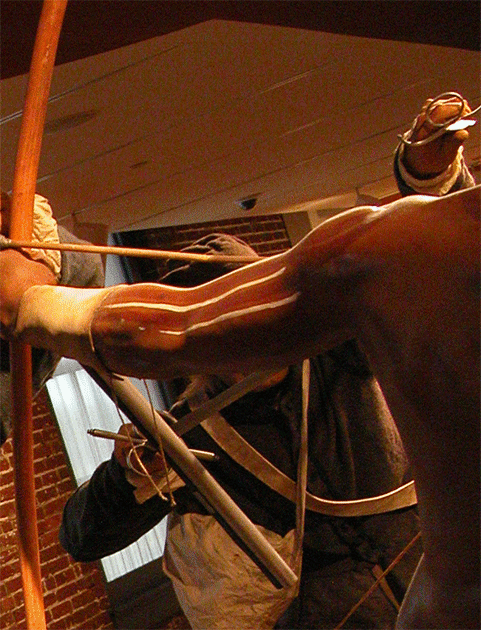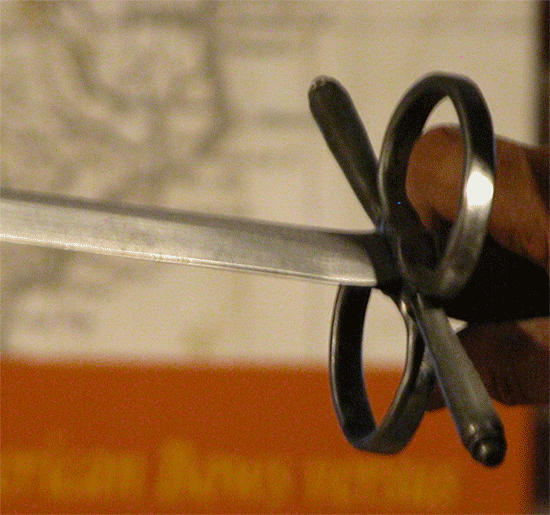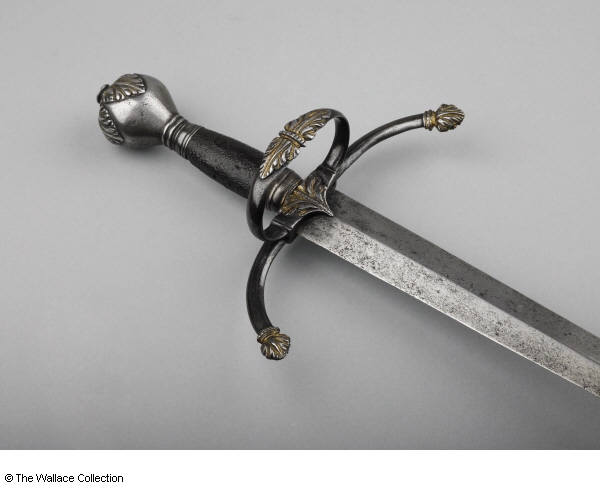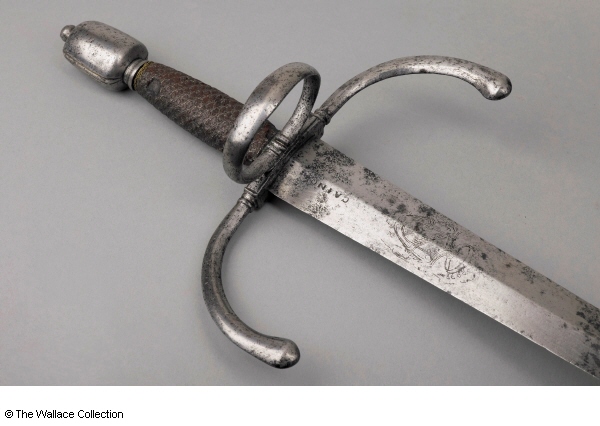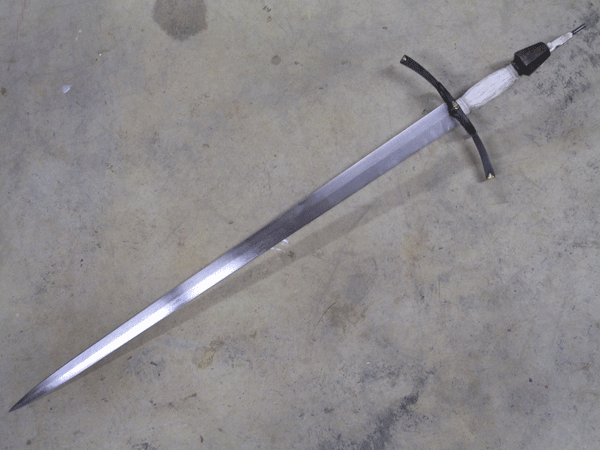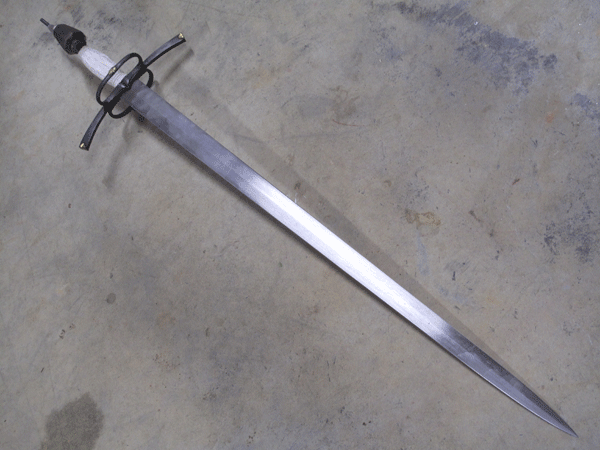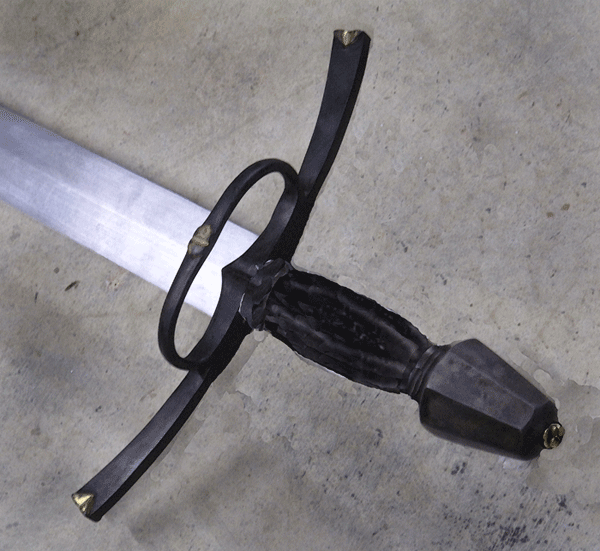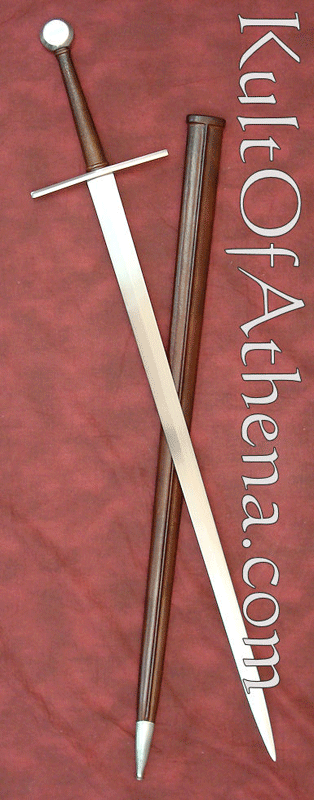http://kultofathena.com/product.asp?item=OH2402
For $105, shipped, (KOA) I got what I would tentatively call a Type XVIIId blade. My first impression is surprise at the thickness of the stock. In this respect it compares favorably to the blade of my A&A Town Guard sword, which is a seriously intimidating field weapon. I don't have calipers on hand but it looks to me like the tang and thickest part of the blade are ~.25", with distal taper (esp. below the forte) to an acute point. As you would expect, it's a very stiff blade, thicker and stiffer than anything I've seen from Windlass. The edges of the lower half of the blade are quite sharp. The edges of the upper half are similar to the stock Windlass edge.
I work almost exclusively with Windlass blades, which tend to be relatively thin and not acutely pointed (which is not necessarily a-historical, depending on the overall design of the sword). For me, this Hanwei-Tinker blade is a bit frightening.
I'm not sure how I should mount this robust blade. It's short enough for a riding sword but strong enough for a field sword. There's enough tang to make a bastard sword, though I think I'd probably cut off the welded-on threaded rod. XVIIId is typically a single-hand sword, but I think you'd need plenty of weight in the pommel to mount this for single-hand use. A complex guard would help, too. I have some faceted scent-stopper pommels and a guard with double side-rings, but I don't currently have any ideas for mounting. I think it could be mounted in a multitude of styles, including as a plain infantry sword of the early 17th c. Hmmm....and I also have a buckler project in mind. Could make a nice colonial pairing.
Whatcha reckon? Suggestions? Ideas?

